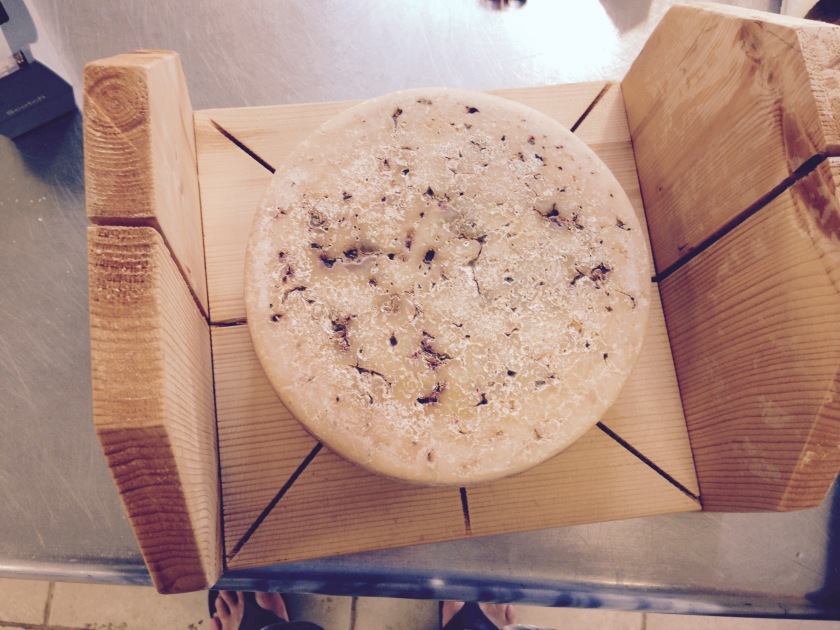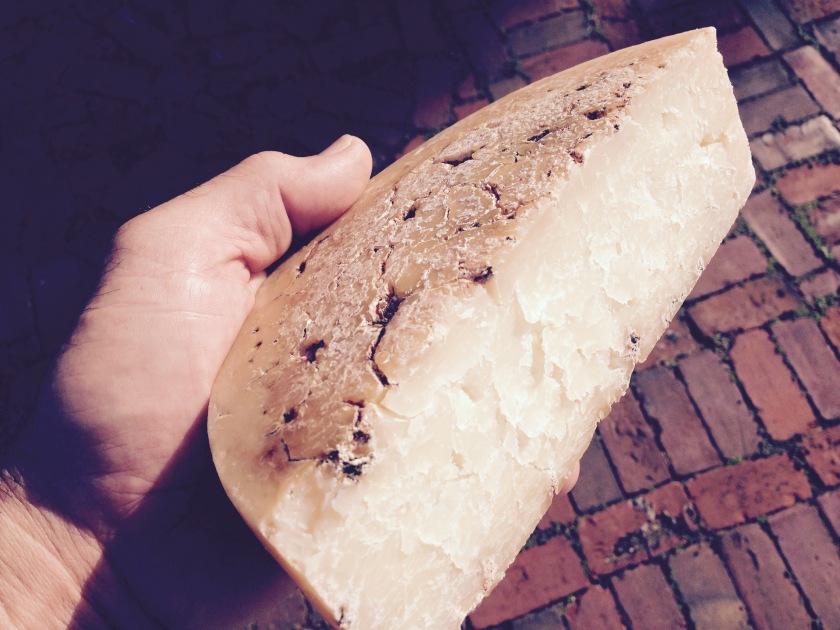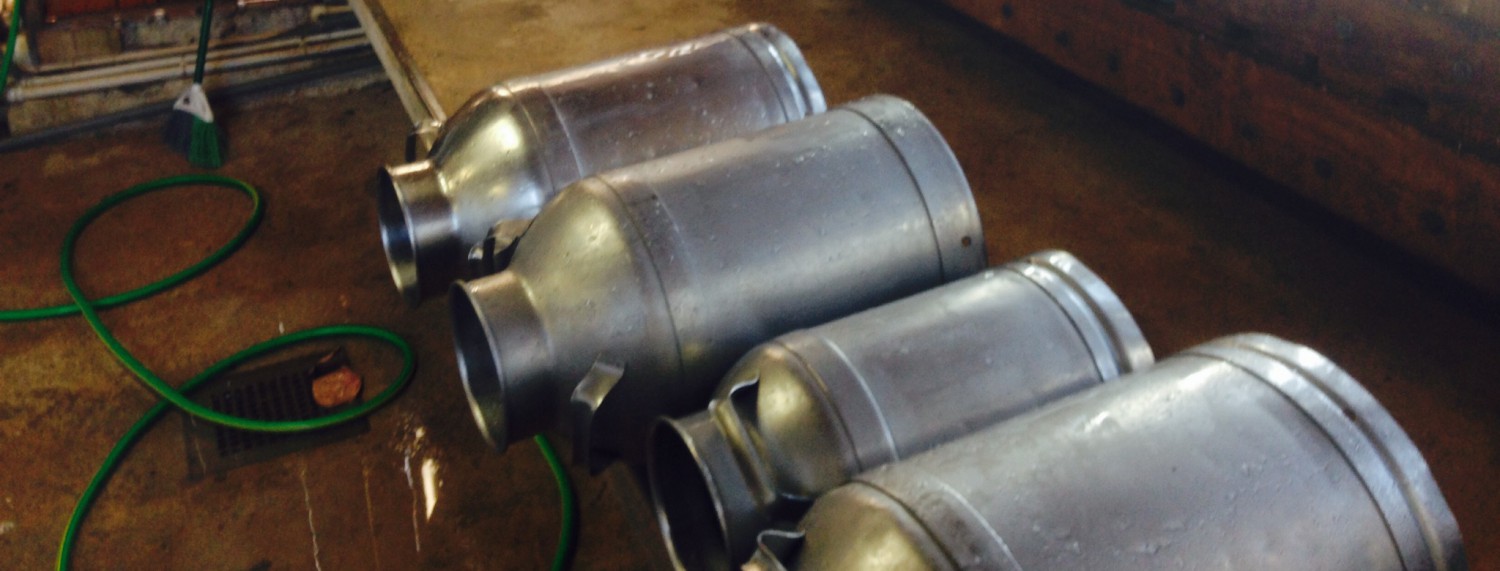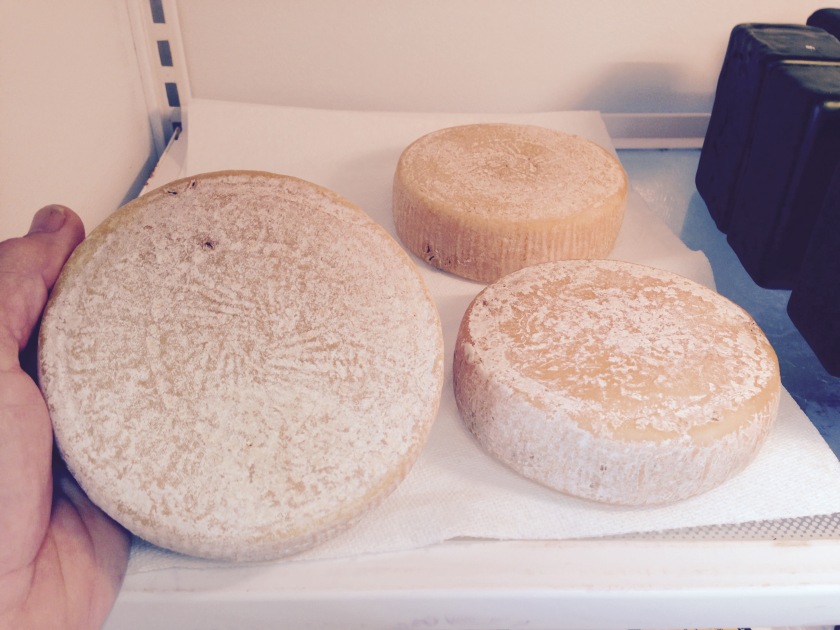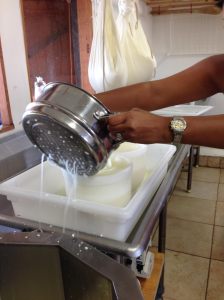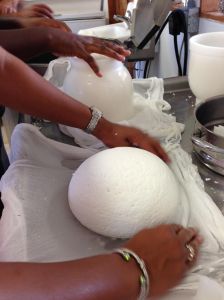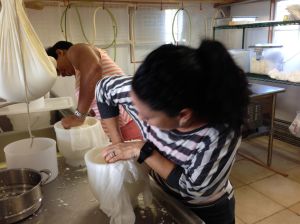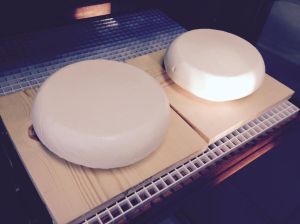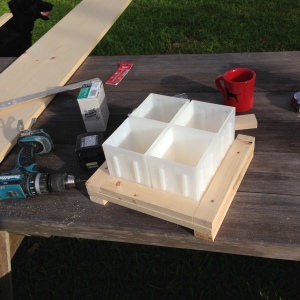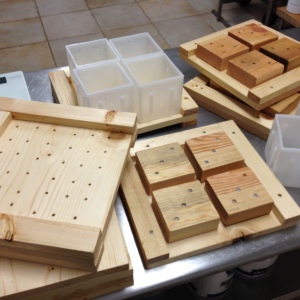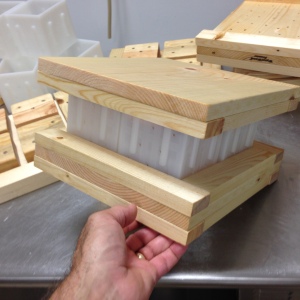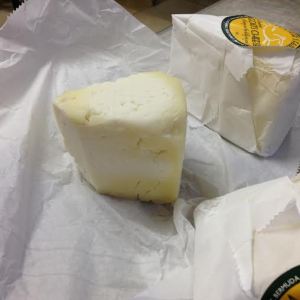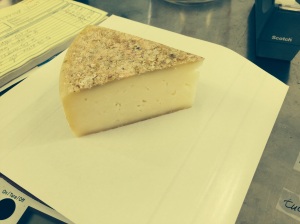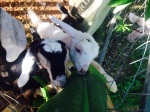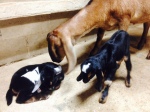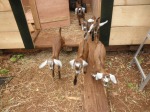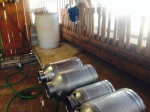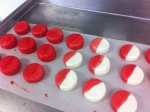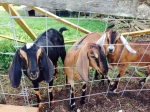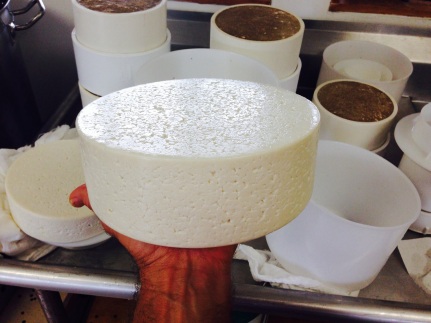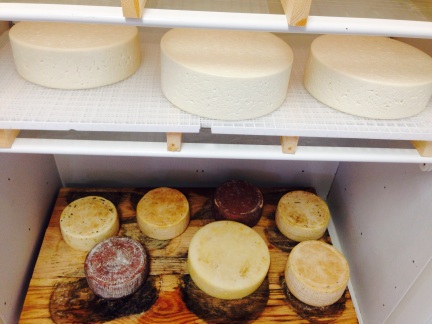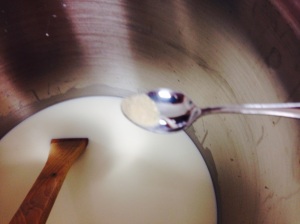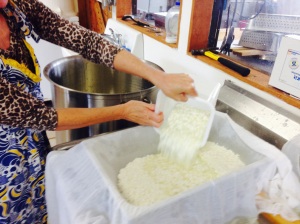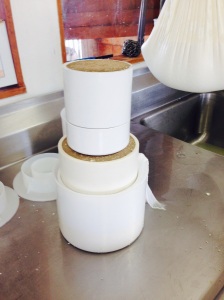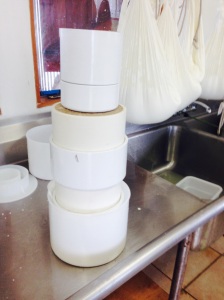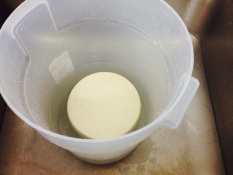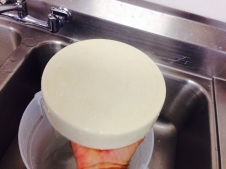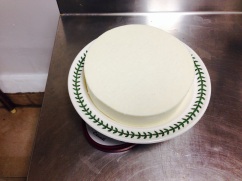So perhaps I learnt more about cheese making in yesterday’s “workshop” than my willing participants. Maybe that’s unfair…(or maybe that’s what the workshops are really all about!)
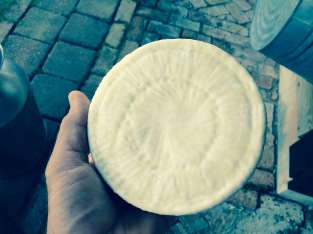
Make 48
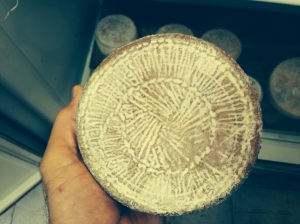
ripened Make 6 cheese
This is what i learnt
Initial Acid Development in the “Ripening” Milk.
In the past i’ve skated over this phase of cheese making as being less important than what follows, and perhaps that has been a mistake. We got the 10 galls of pasteurized goats milk to a good setting temp (86F) and added ½ teasp. of Flora Danica and ½ teasp. of the “other culture” – the Ph. was 6.6 and even after an hour “ripening” the Ph. had hardly dropped .1 to 6.5. – I expected more. Still, time demanded we move on to adding the rennet.
I thought back to my Robiola makes (a recipe where the milk ripens for hours prior to the addition of rennet). Conclusion – Next make I may need to add a little more starter culture and give it a little more time to work.
Rennet
Clearly yesterday we scored a goal with the amount of rennet added – I dialed back considerably on the rennet – (25 drops for 10 gallons (Wow! -Only 2.5 drops per gallon – this is getting real close to the Robiola). Previous makes had shown too quick curd development in 1 hour (too much rennet). Yesterday, after an hour the surface of the curd mass still looked flat – like milk. At that point we did a “clean break” test which I would say was spot on – the curd mass lifted up and then broke cleanly. We then proceeded to gently cut and stir the soft curd for a good hour or so – down to “pea” size. The Ph. readings continued to seem too high, but again, I put this down to inadequate initial ripening of the milk. After an hour we “cooked” the curd a little by raising the temp. to around 93 – 95F).
Predraining
At Ph. 6.3 we predrained the curd in cheesecloth and it matted up nicely and in 15 – 20 minutes we broke up the curd into 1” pieces and returned it to the cheesecloth for another 20 minutes or so before hooping. One thing this relatively quick hooping accomplished was a nice “closed” rind (yay!)
The “Closed Rind”
We went back to the basket molds. Why? 1.) The resulting cheeses just look so damn handsome, and 2.) I wanted to get a “closed rind” cheese surface as the “broken” surfaces of the big wheels have just begun to piss me right off. And 3.) These are smaller cheeses than the big wheels – and perhaps my set up is just better suited to ripening smaller cheeses.
Here’s a photo of one of the make 48 cheeses next to a wheel with a “broken” rind surface, (you can see the remaining 3 cheeses from make 48 on the shelf below, still in their cheese cloths and sitting in their molds.)
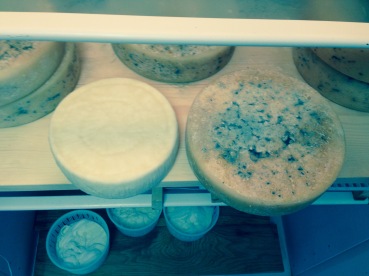
“closed” rind on left “broken” rind on right
Weights
We kneaded the curd into the molds for the first few initial flips to get a good cheese shape. We made 4 cheeses from the 10 gallons and maybe we should have shot for only 3 cheeses (or maybe not – I’m undecided). The resulting cheeses are perhaps a little thin – but hey – this is pasteurized milk and these cheeses should ripen quicker so I’m not too upset by this. I started with the 2 qt. water bucket weights plus the bullet weights – after a few flips the bullet weights just seemed way too heavy and unnecessary so I ditched them and let the baskets just sit on each other. At the end of the day I put the cheeses still in the baskets in the ripening fridge to sit overnight.
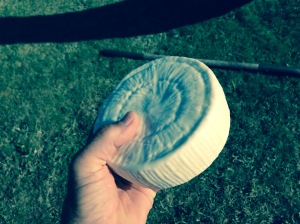
A little thinner than Make 6 cheeses
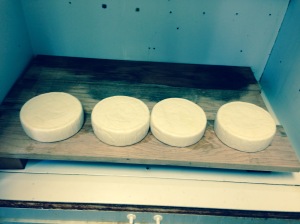
make 48 cheeses hand salted
Day 2
Lookin’ Goooood! – The cheeses were left in their baskets overnight in the ripening fridge so acid development could continue – and it seems to have worked a treat as the Ph of the cheeses this morning is a respectable 5.7 and perfect for salting. And they look great! Closed rind surface and a nice size.
Salting
We didn’t salt the curd – these cheeses needed time to develop acidity and salting the curd would have killed that process. Originally I thought I’d brine them like the big wheels but seeing them this morning made me think I could hand salt these cheeses quite successfully.
Ripening
Not much can be tinkered with here – 55F at high humidity – but what I can do is give them the loving attention they deserve – brine wash them occaisionally to get an initial decent rind formation etc. – so we’ll see.
New Direction
So all in all it was a successful make! – And, once again, has pointed me in a new direction (startin’ to feel like a damn weather vane!). So the next make will be the same with just one adjustment – a little more Flora Danica and a greater initial ripening time for the milk.
I’m going to attempt to diligently document the ripening of this cheese by taking a daily photograph of the same cheese over the next 60 days – and then string the photos all together in a little video clip – fun, huh? – stay tuned!
